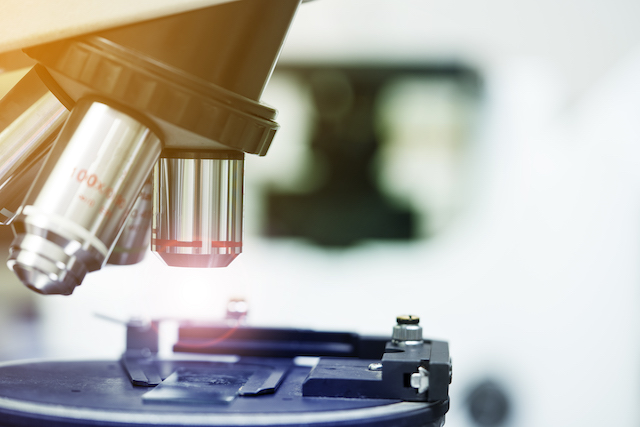
There are different types of laboratory microscopes.
There are different types of laboratory microscopes, and each one of them solves a unique problem. In this blog, you will find some helpful information on a few different types of microscope types, as well as the applications for every microscope and just how each one will be used. Read on to learn about each different microscope and its use in your laboratory!
Stereo Microscopes
Stereo microscopes are used to examine a few different samples that you’d be able to hold right in your hand. A stereo microscope provides the user with a 3D image, or “stereo” image, and will usually provide magnification between 10x – 40x. The stereo microscope is used within manufacturing, quality control, science experiments, dissection experiments, and many more. A stereo microscope usually provides both transmitted and reflected illumination and could be used to view a sample that won’t allow light to pass through it.
Compound Microscope
A compound microscope might also be labeled as a biological microscope. Compound microscopes are used in laboratories, wastewater treatment plants, schools, and more. Samples viewed under a compound microscope have to be prepared on a microscope slide using a coverslip to help flatten the sample. Students will usually view prepared slides under the microscope to help save time by eliminating the entire slide preparation process. The compound microscope could be used to view many samples, some of which include cheek and blood cells, bacteria, tissue, algae, and thin sections of organs. Compound microscopes are used primarily to view samples that can’t be seen with the naked eye.
Inverted Microscope
Inverted microscopes are available as biological inverted microscopes. Biological inverted microscopes usually provide magnification of 40x, 100x, and sometimes 200x and 400x. These inverted biological microscopes are typically used to view living samples that are in a petri dish. An inverted microscope will allow the user to place their petri dish on a flat surface. The objective lenses are housed underneath the stage, and the objective lenses are housed underneath the surface. Inverted microscopes are usually used for in-vitro fertilization, cell imaging, cell biology, microbiology, and neuroscience. Inverted microscopes are typically used in research to help study and analyze and study cells and tissues, particularly living cells.
There are also inverted metallurgical microscopes that are used to examine large parts with higher magnification for faults or fractures. They’re similar to biological inverted microscopes in the magnification provided, but one difference is that the samples aren’t in a petri dish, but a smooth side of the sample has to be prepared so it will lay flat on the stage.
FOR ALL LAB EQUIPMENT AND LAB NEEDS, CONTACT LAB PEOPLE TODAY
The Lab People Inc. is a trusted provider of laboratory equipment, services, supplies, and rental equipment for you and your laboratory. As an ISO 17025 accredited service organization, we stand behind our services with 100% satisfaction guaranteed for all of our customers. We are here to provide you with the best lab equipment service, equipment, and supplies.
For more information about how we can assist you, visit our website, email us, or give us a call at 1-800-296-2001!
Do not forget to follow us on Facebook, Twitter, and Linkedin!
